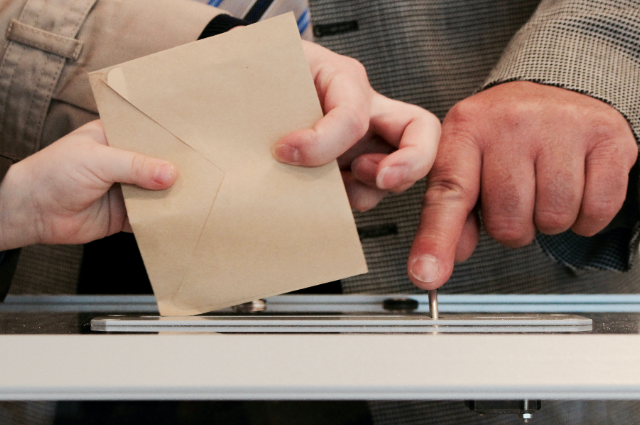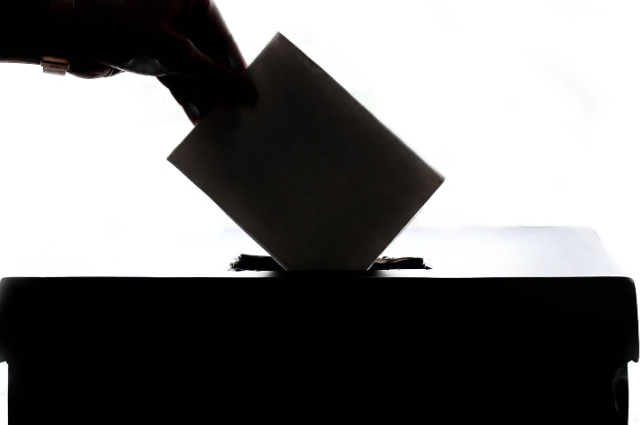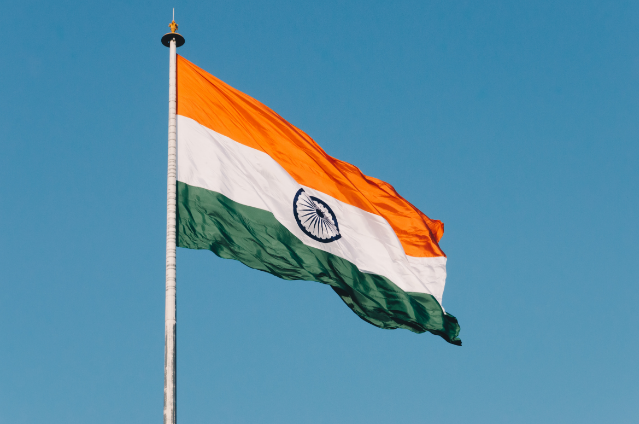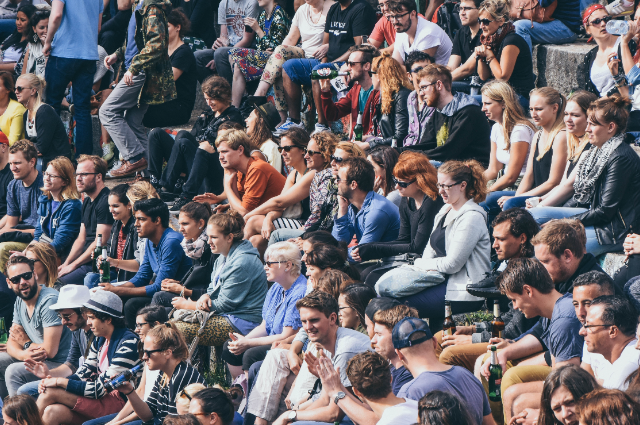
Photo by Arnaud Jaegers on Unsplash
India, the world's largest democracy, is no stranger to the complexities of its electoral system. With elections happening at various levels of government throughout the year, the country witnesses a perpetual electoral cycle. This cycle not only strains resources but also diverts the focus of elected officials from governance to campaigning. To address these issues, the concept of "One Nation, One Election" (ONOE) has emerged as a potential reform in India's electoral landscape. In this blog post, we will delve into the ONOE concept, exploring its advantages, challenges, and the feasibility of synchronizing India's electoral calendar.
Understanding One Nation, One Election (ONOE)
ONOE is a proposal to hold all elections, whether they are for local bodies, state legislatures, or the national parliament, simultaneously. The idea is to align the electoral calendars at different levels of government to ensure that elections take place only once in a fixed period, say, every five years. This synchronization aims to streamline governance, reduce election-related expenses, and minimize the disruptions caused by frequent elections.
Advantages of ONOE
1. Streamlined Governance
The primary argument in favor of ONOE is that it would lead to better governance. With elections happening concurrently, elected representatives can focus on their responsibilities and work towards fulfilling their promises without the looming pressure of upcoming elections. This shift from politics to governance could potentially result in more efficient public administration.
One of the fundamental advantages of the ONOE concept is its potential to streamline governance. At present, India's electoral calendar is a complex web of various elections occurring at different times. This frequent election cycle often leads to politicians being in a perpetual campaign mode, diverting their attention away from governance. Here's how ONOE could streamline governance:
Continuous Focus on Governance: With elections happening concurrently, elected representatives can concentrate on their roles as policymakers and administrators for the entire term. This continuous focus on governance can lead to more effective and efficient public administration.
Reduced Politicking: Frequent elections force politicians into a perpetual campaign mode, where they are constantly seeking re-election. ONOE would reduce this cycle, allowing elected officials to concentrate on policy formulation and implementation.
Long-Term Planning: ONOE could encourage politicians to engage in long-term planning and development projects rather than short-term, populist measures aimed at winning the next election.
Stability: Frequent elections can lead to political instability. ONOE has the potential to provide political stability by minimizing the disruptions caused by elections.
2. Cost Savings
Frequent elections are not only resource-intensive but also expensive affairs. Holding elections for various levels of government at different times requires a substantial budget allocation. ONOE would significantly reduce these costs, allowing governments to allocate resources more effectively to areas such as infrastructure, healthcare, and education.
The financial implications of India's current multi-tiered electoral system are substantial. Each election, whether it's at the local, state, or national level, incurs significant expenses. Here's how ONOE could lead to cost savings:
Consolidation of Resources: Synchronizing elections would consolidate the resources needed for election infrastructure, security, and administration, reducing duplication and inefficiencies.
Reduction in Campaign Spending: Political parties and candidates spend vast sums on election campaigns. ONOE would limit the number of campaigns and, consequently, campaign spending, allowing parties to use their resources more judiciously.
Economic Benefits: The reduction in election-related disruptions and road closures can have positive economic effects by providing stability and allowing businesses to function smoothly.

Photo by Element5 Digital on Unsplash
3. Reduced Disruption
Elections in India, especially in populous states, can be disruptive to daily life and the economy. Frequent election campaigns, road closures, and heightened security measures can disrupt normalcy. With synchronized elections, these disruptions would be minimized, leading to a more stable environment for citizens and businesses.
Frequent elections can significantly disrupt the daily lives of citizens and the functioning of the economy. Here's how ONOE could reduce these disruptions:
Minimized Campaigning Disturbances: Frequent election campaigns involve rallies, road closures, and public gatherings that can disrupt daily life. ONOE would limit the frequency of such disturbances.
Steady Economic Activity: Frequent elections can lead to uncertainty and reduced economic activity. ONOE's stability could promote a steady economic environment, benefiting businesses and investors.
Efficient Resource Allocation: Security and administrative resources are diverted to election-related duties during campaign periods. With synchronized elections, resource allocation can be more efficient.
Challenges and Concerns
While the idea of ONOE has its merits, it also faces numerous challenges and concerns that need to be addressed for successful implementation.

Photo by Naveed Ahmed on Unsplash
1. Constitutional and Legal Issues
Implementing ONOE poses significant constitutional and legal challenges. India's federal structure grants states a degree of autonomy in scheduling their elections. Changing this would require amendments to the Constitution and the rewriting of various election laws.
The Indian Constitution grants states substantial autonomy in matters related to elections. Each state has the authority to decide when to hold its elections, subject to certain guidelines provided by the Election Commission of India (ECI). This autonomy is rooted in India's federal structure, which allows states to have their governments and legislatures. To implement ONOE, significant constitutional amendments would be required, which could include:
Amending Article 83: Article 83 of the Indian Constitution specifies the duration of the Lok Sabha (House of the People) and can be amended to set fixed terms for state legislatures to align with national elections.
Amending Article 172: Similarly, Article 172 deals with the duration of state legislatures and could be amended to align state elections with national elections.
Election Laws: Several election-related laws would need to be amended to accommodate ONOE, including the Representation of the People Act, 1951, and the Delimitation Act, 2002.
Amending the Constitution is a lengthy and complex process that involves obtaining the consent of a significant number of states and both houses of Parliament. Additionally, the political will to undertake such extensive changes must be present, as constitutional amendments require a two-thirds majority in both houses of Parliament.
2. Political Opposition
Political parties often have varying interests and strategies for different levels of government. Smaller parties may feel disadvantaged if elections are synchronized, as they might not have the resources to campaign effectively on all fronts. This has led to opposition from several political parties, who argue that ONOE could undermine the diversity of Indian democracy.
The diversity of India's political landscape is a crucial aspect of its democracy. With numerous regional parties representing various states and regions, the electoral dynamics can be complex. Here's how ONOE could affect political diversity:
The dominance of National Parties: ONOE could potentially benefit national parties with greater resources and reach, as they would be better positioned to campaign on multiple fronts. This might marginalize smaller regional parties.
Loss of Regional Identity: Regional parties often focus on issues specific to their states or regions. ONOE might dilute this regional focus, potentially sidelining local concerns.
Resource Disparities: Smaller parties may not have the financial resources or organizational strength to contest simultaneous elections effectively. This could lead to an uneven playing field.
To address these concerns, any move toward ONOE would need to include mechanisms that ensure the representation of regional and smaller parties and protect the diversity of India's political landscape.
3. Logistical and Administrative Challenges
The sheer scale of India, both in terms of its size and population, presents logistical and administrative challenges. Coordinating elections across diverse regions with varying political landscapes, languages, and cultures is a Herculean task. The Election Commission of India would need substantial resources and support to manage such an endeavour effectively.
India's vastness and diversity pose significant logistical and administrative challenges when it comes to synchronizing elections. These challenges include:
Resource Allocation: Conducting simultaneous elections would require substantial resources, from election machinery and personnel to security forces. Adequate planning and coordination would be crucial.
Language and Cultural Diversity: India is a linguistically and culturally diverse nation. Preparing election materials and campaigns in multiple languages and accommodating cultural sensitivities would be a major undertaking.
Security Concerns: Ensuring the security of candidates, voters, and election personnel across the country during a synchronized election is a formidable task. Security logistics would need careful planning.
Voter Education: Voter education and awareness campaigns would need to be comprehensive and far-reaching to ensure that citizens are well-informed about the candidates and issues.
Feasibility and Implementation
Despite the challenges, there have been discussions and proposals to move toward ONOE in India. To assess the feasibility, several aspects need consideration:
1. Constitutional Amendments
Implementing ONOE would necessitate constitutional amendments to ensure that all elections align with the national five-year cycle. The process of amending the Constitution is both lengthy and complex, involving consensus among a significant number of states.
Constitutional amendments are a sensitive matter in India's democracy. They require the approval of a majority of states, including a two-thirds majority in both houses of Parliament. Given the diversity of India's political landscape and the potential impact of ONOE on regional parties, building consensus for such amendments could be challenging.
2. Pilot Projects and Regional Initiatives
Several states in India have already experimented with aligning local body elections with state or national elections. These pilot projects could provide valuable insights into the challenges and benefits of synchronization. Learning from these experiences would be crucial for a successful nationwide implementation of ONOE.
States like Madhya Pradesh and Telangana have taken steps to synchronize local body elections with state elections, while states like Odisha have experimented with aligning local body elections with national elections. These initiatives can serve as test cases to understand the practical challenges and advantages of synchronization.
3. Political Consensus
For ONOE to become a reality, it would require broad political consensus. All major political parties need to come together to support the idea and work on the necessary legal and procedural changes. Building this consensus will involve addressing the concerns and interests of various parties and regions.
Political parties in India often have differing views on electoral reforms. While some may see ONOE as a path to efficiency and cost savings, others may perceive it as a threat to regional diversity and identity. Engaging in dialogue and negotiations to find common ground would be essential to garner political support.

Photo by Naveed Ahmed on Unsplash
Public Opinion and Stakeholder Perspectives
Public opinion plays a pivotal role in shaping electoral reforms. It's essential to gauge the sentiments of the people regarding ONOE. While some may welcome the idea of reduced election-related disruptions and costs, others may express concerns about centralization and a potential loss of regional identity.
Surveys and polls conducted on this topic have shown varying results. While some respondents have favoured ONOE for its potential benefits, others have raised doubts about its practicality and impact on federalism. Understanding public sentiment is crucial for ensuring that any electoral reform aligns with the wishes and expectations of the citizens.
Public awareness campaigns and educational efforts would also be necessary to inform the public about the potential advantages and disadvantages of ONOE, allowing them to make informed decisions.
International Comparisons
To gain a broader perspective on ONOE, it's worth examining how other countries manage their electoral calendars. Countries like the United States and Brazil hold elections at different levels of government at different times. In contrast, countries like Sweden and Germany synchronize their elections to some extent. Comparing these systems can shed light on the advantages and disadvantages of ONOE.
United States
In the United States, elections are held at various levels of government, including federal, state, and local elections. These elections occur at different times, leading to a frequent electoral cycle. While this system has its advantages, such as allowing voters to focus on different levels of government during separate elections, it also results in a continuous campaign cycle.
Germany
Germany practices a form of synchronized elections, where state and federal elections are often held simultaneously. This approach aims to reduce campaign fatigue and administrative costs. However, the exact alignment of elections can vary between states, reflecting Germany's federal structure.
Sweden
Sweden practices a similar approach to Germany, with elections at different levels of government-held simultaneously when possible. This synchronization aims to reduce costs and streamline governance by aligning electoral calendars.
These international examples show that there is no one-size-fits-all approach to synchronizing elections. Different countries adopt various strategies based on their unique political systems and historical contexts. When considering ONOE, India must take into account its own federal structure and diversity.
Alternatives to ONOE
While ONOE is one way to address the issues of frequent elections, there are alternative electoral reforms that India could consider. These include:
1. Fixed Election Dates
Introducing fixed election dates at the national, state, and local levels could bring predictability to the electoral calendar without requiring complete synchronization. This approach could reduce costs and minimize disruption while preserving some degree of flexibility.
Fixed election dates could help address some of the concerns associated with frequent elections, such as campaign fatigue and disruption of governance. By specifying the date on which elections will be held, political parties and candidates can plan their campaigns more effectively, and voters can anticipate when to exercise their franchise.
2. Election Funding Reforms
Reforming campaign financing laws could reduce the excessive expenses associated with elections. Stricter regulations on campaign spending and contributions could level the playing field for smaller parties and independent candidates.
Campaign financing plays a significant role in the cost of elections. Wealthier candidates and political parties often have an advantage in terms of resources, allowing them to run extensive and expensive campaigns. Implementing campaign finance reforms could reduce the influence of money in politics and create a more level playing field for all candidates.
3. Strengthening Local Governments
Empowering local governments and giving them more autonomy could reduce the importance of state-level elections, potentially reducing the overall frequency of elections.
In India, local governance is essential for addressing grassroots issues and empowering communities. By strengthening local governments and devolving more powers to them, the need for frequent state-level elections could be reduced. This would also align with the principles of decentralization and encourage greater citizen participation in local governance.
Conclusion
In conclusion, the concept of One Nation, One Election is a compelling proposition with the potential to streamline governance, save costs, and reduce disruptions caused by frequent elections. However, its implementation in a diverse and federal democracy like India is fraught with challenges, including constitutional hurdles, political opposition, and logistical complexities.
The feasibility of ONOE depends on building political consensus, conducting pilot projects, and carefully navigating constitutional amendments. India's path toward electoral reform should also consider alternative solutions, such as fixed election dates and campaign financing reforms, to achieve the desired outcomes while preserving the essence of its federal democracy.
The debate over ONOE is ongoing, and it remains to be seen whether India will embrace this ambitious electoral reform and how it will shape the country's political landscape in the years to come. Ultimately, the decision should prioritize the interests of the citizens and the efficient functioning of the world's largest democracy.
As India continues to grapple with the complexities of its electoral system, the discussion surrounding ONOE represents a critical step in the evolution of its democracy. Balancing the advantages of streamlined governance and cost savings with the principles of federalism and diversity will be the key challenge in shaping India's electoral future. The path chosen will have far-reaching implications for the nation's political landscape and its ability to effectively govern and serve its citizens.
